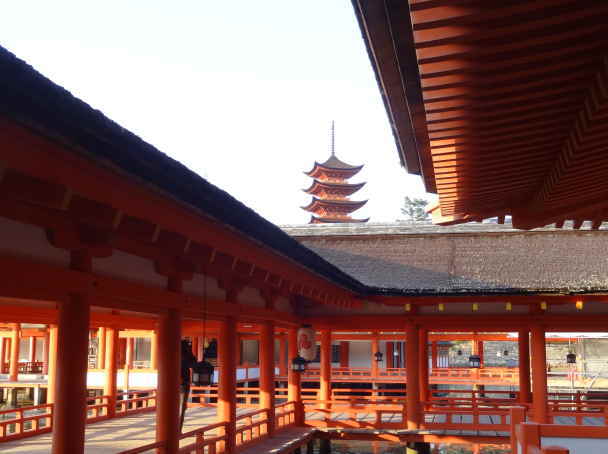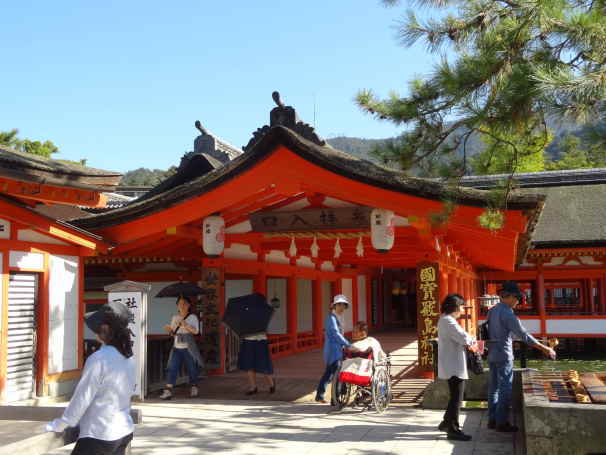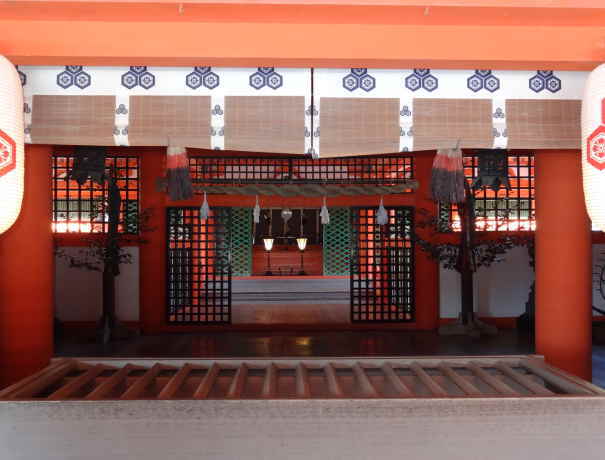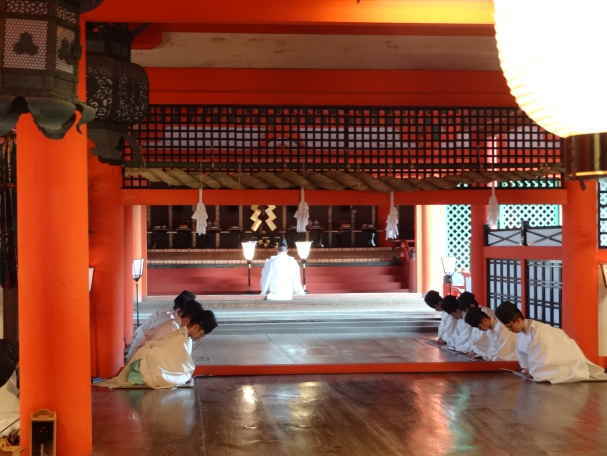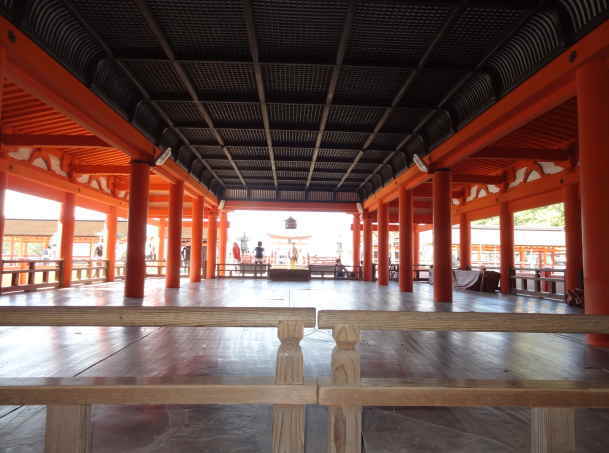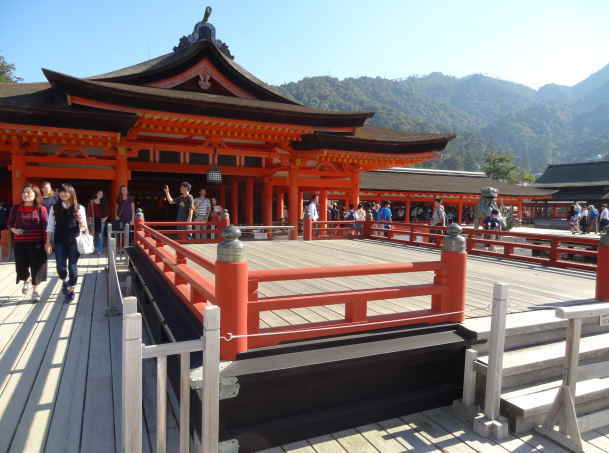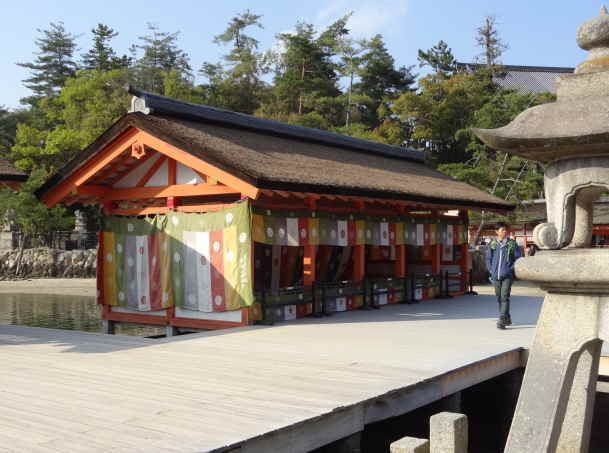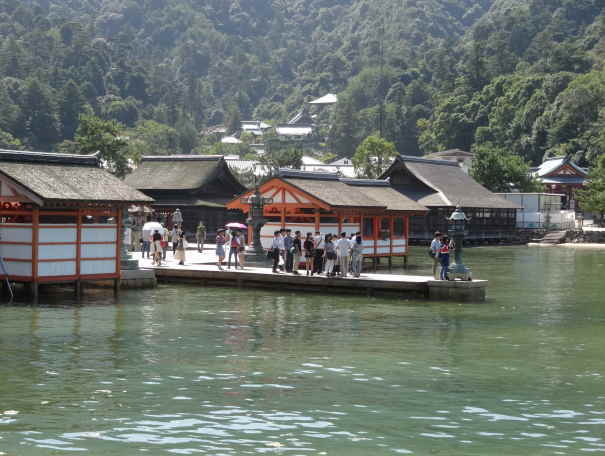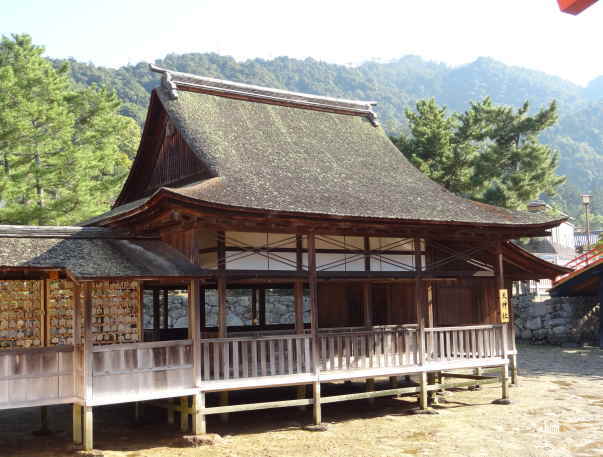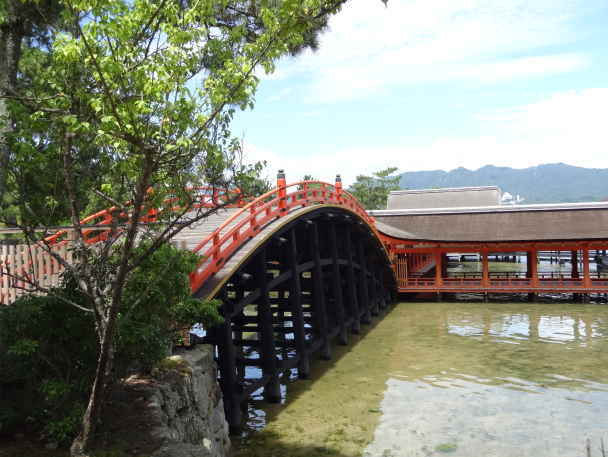| Itsukushima
Shrine was built in the style known as Shinden-zukuri architecture. Heian era was brought from Kyoto by Taira-no-Kiyomori. residence of the Imperial palace and high class nobles. |
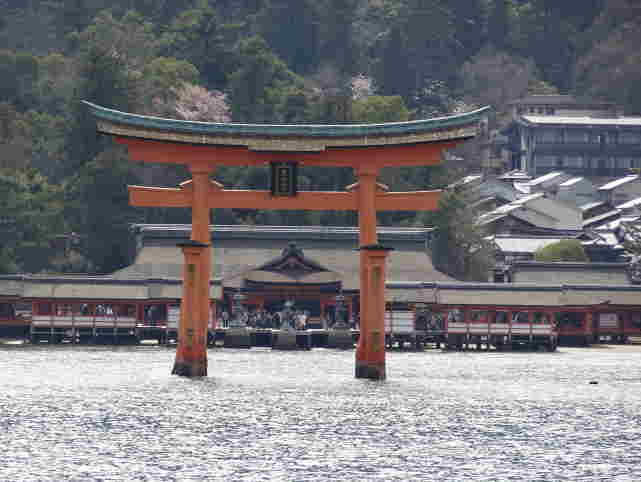 |
| The most notable feature of the Shinden-zukuri architecture is a symmetrical
arrangement of all the buildings like above. The main hall was placed in the center and subordinate buildings (Tainoya) were arranged on both sides of the main hall. a garden pond. mountains in the background, trees, and also a temporary Noh stage. If you come, you can see that Itsukushima Shrine’s Main Shrine corresponds to the Main hall, and Asazaya and Daikoku Shrine are Tainoya, and long corridors extend to both side of the doorways. wooden platform and the sea shore are like to the garden. |
 |
| In the low tide, if you stand under the Otorii, you can appreciate the amazing Symmetry of Itsukushima Shrine. When the Heian era came to an end, Shinden-zukuri architecture also steadily declined. Shinden-zukuri architecture of to remind us of what it used to be except for Itsukushima Shrine now a days. |
